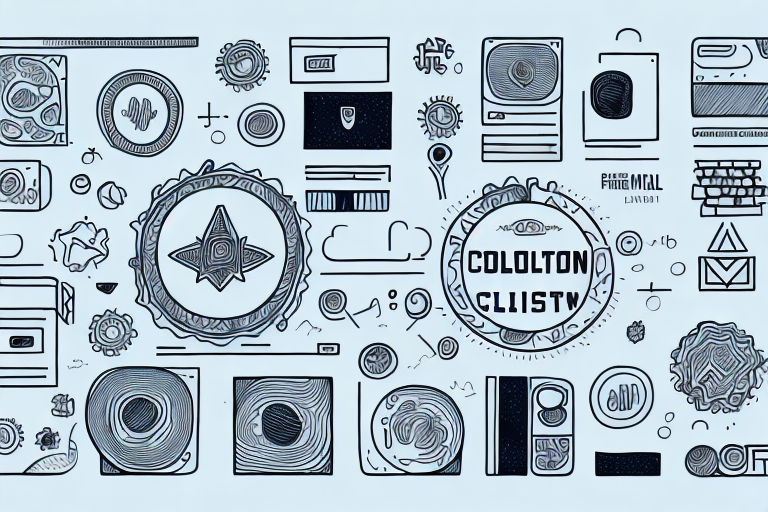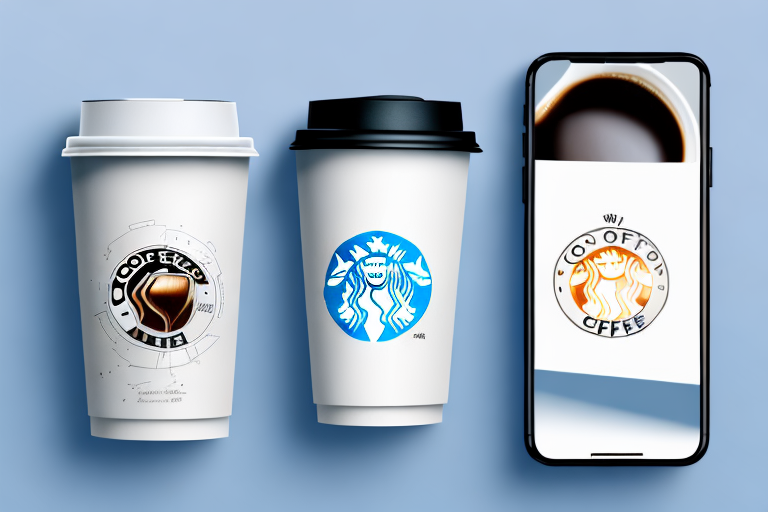In today's highly competitive marketplace, collaborative marketing has become an essential strategy for businesses in the food and beverage industry. By joining forces with like-minded partners, companies can leverage their resources, expand their reach, and create mutually beneficial opportunities. In this article, we will dive deep into the world of collaborative marketing, exploring its definition, importance in the food and beverage industry, key elements of success, various strategies, implementation steps, and how to overcome common challenges.
Understanding Collaborative Marketing
Definition and Importance of Collaborative Marketing
Collaborative marketing, also known as co-marketing or partnership marketing, is a strategic approach where two or more brands work together to promote their products or services. It involves pooling resources, sharing costs, and combining efforts to achieve shared marketing objectives.
Collaborative marketing goes beyond traditional marketing strategies by fostering collaboration and synergy between brands. It allows businesses to tap into the strengths of their partners, creating a win-win situation for all involved. By leveraging each other's expertise and customer base, brands can reach a wider audience and maximize their marketing impact.
For the food and beverage industry, collaborative marketing offers immense opportunities. By partnering with complementary brands, companies can tap into new markets, enhance brand visibility, and create a positive association with trusted partners. This not only helps in expanding their reach but also strengthens their positioning in the market.
Additionally, collaborative marketing allows businesses to access a larger customer base, drive sales, and build long-term relationships with consumers. By working together, brands can combine their resources to create compelling campaigns that resonate with their target audience. This collaborative approach often leads to increased brand awareness, customer engagement, and ultimately, higher sales.
The Role of Collaborative Marketing in the Food and Beverage Industry
In the highly competitive world of food and beverage, standing out from the crowd is crucial. Collaborative marketing enables companies to do just that. By teaming up with other brands, businesses can leverage their combined strengths to create innovative campaigns that capture consumer attention.
Collaborative marketing in the food and beverage industry can take various forms. It could involve joint product launches, where two brands come together to create a unique offering that appeals to their shared target audience. For example, a coffee brand might collaborate with a bakery to create a limited edition coffee-flavored pastry, enticing customers with a delightful combination.
Moreover, collaborative marketing helps establish credibility and trust. When renowned brands join forces, customers perceive the partnership as a validation of quality and expertise. This association can boost customer loyalty and drive repeat business. For instance, a health food brand partnering with a fitness influencer can create content that showcases the benefits of their products in a real-life setting, reinforcing the brand's reputation and encouraging customers to make healthier choices.
Collaborative marketing also opens doors to cross-promotion opportunities. Brands can leverage each other's platforms and customer base to reach a wider audience. For example, a restaurant might collaborate with a local food delivery service, offering exclusive discounts to customers who order through the delivery platform. This not only drives sales for both brands but also introduces new customers to their offerings.
In conclusion, collaborative marketing plays a pivotal role in the food and beverage industry. It allows brands to tap into new markets, enhance brand visibility, and create innovative campaigns that capture consumer attention. By working together, businesses can leverage each other's strengths, establish credibility, and drive sales. As the industry continues to evolve, collaborative marketing will remain a powerful tool for brands looking to stay ahead of the competition and create meaningful connections with their target audience.
Key Elements of Successful Collaborative Marketing
Collaborative marketing is a powerful strategy that can help brands expand their reach and enhance their reputation. By joining forces with like-minded partners, brands can create impactful campaigns that resonate with their target audience. While the initial HTML text provides a brief overview of the key elements of successful collaborative marketing, let's dive deeper into each element to gain a more comprehensive understanding.
Identifying the Right Partners
When it comes to collaborative marketing, finding the right partners is crucial. It's not just about partnering with any brand; it's about finding brands that share similar target audiences, values, and brand positioning. Thorough research and due diligence are essential to ensure compatibility and align expectations.
Consider the example of a fitness apparel brand looking to collaborate with a health and wellness influencer. By partnering with someone who shares the same target audience and values, the brand can tap into the influencer's loyal following and gain credibility within the fitness community.
Aligning Brand Values and Goals
Before embarking on a collaborative marketing campaign, it is crucial to align brand values and goals. Each partner should have a clear understanding of their unique selling proposition and how it fits into the overall narrative of the campaign.
For instance, imagine a sustainable fashion brand teaming up with an environmental organization. By aligning their values and goals, they can create a powerful campaign that raises awareness about the negative impact of fast fashion on the environment and promotes sustainable alternatives.
Creating a Win-Win Strategy
Collaborative marketing should be a win-win situation for all involved parties. It's not just about one brand benefiting at the expense of another; it's about creating a strategy that benefits both brands and ultimately delights customers.
Consider the example of a food delivery app partnering with a popular restaurant chain. By combining their product offerings, they can create exclusive promotions that incentivize customers to order from the app and try the restaurant's delicious menu items. This win-win strategy not only boosts sales for both parties but also provides customers with a unique and satisfying dining experience.
In conclusion, successful collaborative marketing requires careful consideration and planning. By identifying the right partners, aligning brand values and goals, and creating a win-win strategy, brands can harness the power of collaboration to achieve mutual success and create memorable experiences for their customers.
Types of Collaborative Marketing Strategies
Collaborative marketing is a powerful tool that allows brands to join forces and create mutually beneficial partnerships. By working together, brands can leverage each other's strengths, expand their reach, and drive sales. In the food and beverage industry, there are several types of collaborative marketing strategies that have proven to be successful.
Joint Promotions and Events
One of the most common forms of collaborative marketing in the food and beverage industry is joint promotions and events. Brands can join forces to hold special promotions, offer exclusive discounts, or host collaborative events. For example, a coffee shop and a bakery might team up to offer a "morning bundle" where customers can get a discounted coffee and pastry when purchased together. By sharing the marketing costs and cross-promoting to each other's customer base, partners can increase brand awareness and drive sales.
These joint promotions and events not only benefit the brands involved but also create a unique and exciting experience for customers. Imagine walking into a coffee shop and being greeted with the aroma of freshly baked pastries from the partnering bakery. The collaboration adds an extra layer of value and excitement to the customer's experience, making them more likely to return in the future.
Co-Branding and Product Collaboration
Co-branding and product collaboration involve combining the strengths of two brands to create a unique product or service. This strategy allows brands to tap into each other's customer base and leverage their existing brand equity. For example, a popular fast-food chain might collaborate with a well-known soft drink brand to create a limited-edition meal combo that features a unique beverage flavor only available through this partnership.
By collaborating on product development, packaging, and marketing, companies can create compelling offerings that stand out in the market. The joint effort not only attracts existing customers of both brands but also piques the interest of new customers who are intrigued by the innovative collaboration. This type of collaborative marketing strategy can generate significant buzz and create a sense of exclusivity around the product or service.
Shared Content and Social Media Campaigns
In the digital age, shared content and social media campaigns have gained immense popularity. By creating compelling content or engaging social media campaigns together, brands can reach a wider audience and amplify their message. Partners can collaborate on blog posts, videos, or social media contests to create buzz and generate organic reach.
For instance, a healthy snack brand and a fitness influencer might collaborate on a series of workout videos that feature the snacks as a post-workout fuel. By sharing these videos on their respective social media platforms, they can reach both the brand's followers and the influencer's audience, expanding their reach and potentially gaining new customers.
Shared content and social media campaigns not only increase brand visibility but also enhance credibility and trust. When two reputable brands collaborate, it sends a message to consumers that they are endorsing each other's products or services. This can be particularly effective in industries where trust and credibility are essential, such as the food and beverage industry.
Collaborative marketing strategies offer numerous benefits for brands, including increased brand awareness, expanded customer base, and enhanced credibility. By working together, brands can create unique experiences, innovative products, and engaging content that captivate consumers and drive business growth.
Implementing Collaborative Marketing Strategies
Steps to Launch a Collaborative Marketing Campaign
Launching a collaborative marketing campaign requires careful planning and execution. Here are some key steps:
- Define clear objectives and desired outcomes
- Identify potential partners and evaluate their compatibility
- Establish goals, roles, and responsibilities
- Create a detailed marketing plan, including timelines and budget allocation
- Develop compelling marketing materials that communicate the partnership's value
- Launch the campaign and monitor its performance regularly
Measuring the Success of Your Collaborative Marketing Efforts
Measuring the success of collaborative marketing campaigns is essential to evaluate their effectiveness and make data-driven decisions. Key performance indicators (KPIs) such as sales volume, brand reach, customer engagement, and social media metrics can provide valuable insights into the campaign's impact. Regular monitoring and analysis of these metrics help identify areas for improvement and ensure continuous growth.
Overcoming Challenges in Collaborative Marketing
Managing Differences and Conflicts
Collaborative marketing brings together different brands with their unique visions and priorities. Managing differences and conflicts is crucial to ensure the partnership's success. Open and honest communication, active listening, and compromise are key to resolving conflicts and maintaining a harmonious relationship.
Ensuring Quality and Consistency
When partnering with other brands, it is essential to maintain consistent quality standards. Aligning on quality control measures and regularly reviewing performance can help ensure that the partnership delivers value to customers. It is important to establish clear guidelines and processes to maintain the integrity of the collaborative efforts.
In conclusion, unlocking the power of collaborative marketing strategies in the food and beverage industry can be a game-changer for businesses. By embracing partnerships, brands can tap into new markets, enhance brand visibility, and create authentic connections with consumers. From identifying the right partners to implementing and measuring the success of campaigns, collaborative marketing offers a wealth of opportunities for brands to thrive in today's competitive landscape. So, don't miss out on the chance to unlock the best collaborative marketing strategies for your food and beverage brand!
Collab with brands and creators. Request your invite at collabs.io



